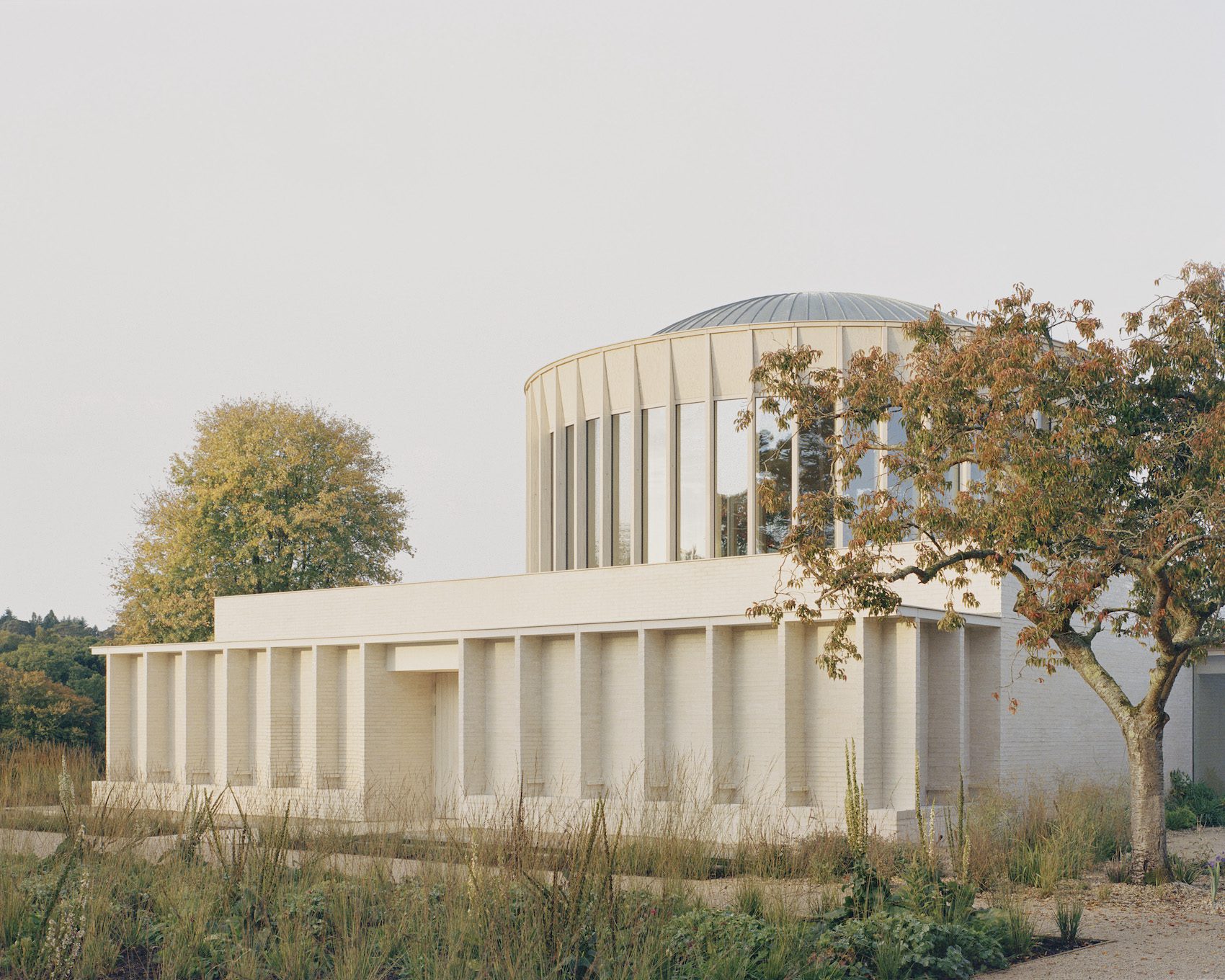A contextually sensitive rural temple designed by James Gorst Architects is conceived as a series of orthogonal pavilions unified by a cloistered walkway.
Photos
Rory Gardiner
Won in competition, James Gorst Architects’ temple complex is located in the village of Rake, set within the South Downs National Park. Replacing an existing dilapidated 1970s complex, the new building comprises a temple, library, chapels, meeting spaces, public foyer and kitchen. Organised around a central courtyard, the plan comprises a series of orthogonal pavilions connected by a cloistered walkway. The internal arrangement follows a progression from secular to ritual spaces; moving from a timber portico and social foyer at the visitor entrance in the east, through to the main temple space in the west.
With a brief to create a building characterised by peace and simplicity, the architect developed a restrained palette of materials, including timber, brick and chalk lime mortar typical of the local context. The resulting spaces allow for quiet contemplation and encourage a spiritual connection to the surrounding landscape.
Sustainability is central to the project, with the design team adopting a ‘fabric-first’ approach. The glulam structural frame was constructed off-site and is engineered to eliminate the need for steelwork. Underfloor heating is provided by a ground source heat pump that is buried in the landscape. Additional power is provided by photovoltaic panels. The inner temple’s precast pendentive arches provide thermal mass. A raised floor slab naturally cools the interior with fresh air supplied by an underground labyrinth ventilation system. High-level actuators in the temple clerestory enable warm air to escape.
The architect, in collaboration with landscape architect McWilliam Studio, undertook a wider reorganisation of the site, which includes a series of gardens connected along pedestrian pathways to allow for moments of contemplation and connection to the surrounding valleys. At the building entrance, two reflection pools provide a moment of pause and meditation, while the central courtyard is sized to mirror the internal footprint of the temple.
“Our aim was to create balance between the landscape, building and interiors; to form one coherent and harmonious design, exploring the relationship of the architecture to the spiritual context,” said Steve Wilkinson, associate at James Gorst Architects.
Source: Architecture Today




